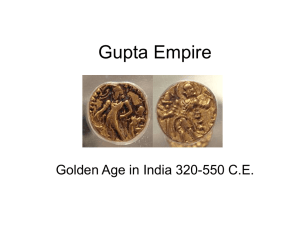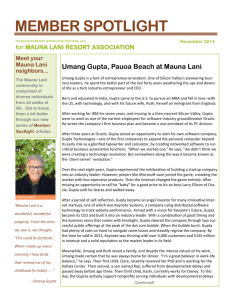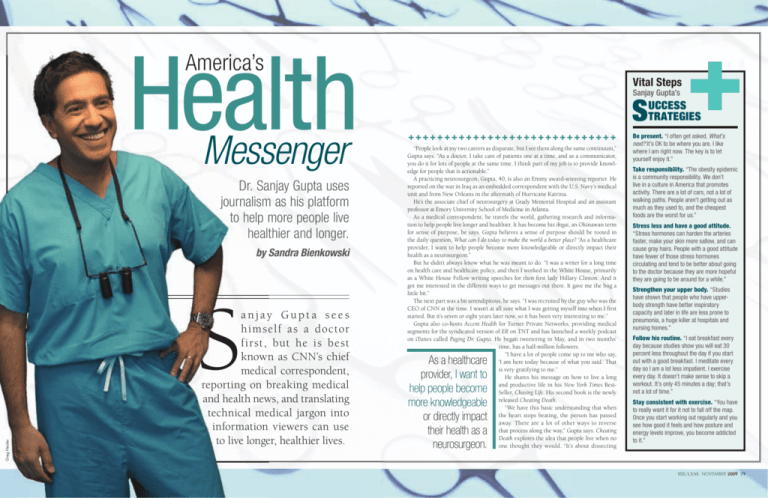
Health
America’s
Messenger
Dr. Sa
Sanjay Gupta uses
journalism as his platform
to help more
m people live
healthier
and longer.
healt
by S
Sandra Bienkowski
S
Greg Heisler
anjay Gupta sees
h im self a s a doctor
first, but he is best
known as CNN’s chief
medical correspondent,
reporting on breaking medical
and health news, and translating
technical medical jargon into
information viewers can use
to live longer, healthier lives.
7788 SSUC
SUCCESS
UCC
UC
CE
ESSSS
NOVEMBER
NOV
N
OV
OVEMB
M E
ER
R 2009
2009
Vital Steps
Sanjay Gupta’s
S
“People look at my two careers as disparate, but I see them along the same continuum,”
Gupta says. “As a doctor, I take care of patients one at a time, and as a communicator,
you do it for lots of people at the same time. I think part of my job is to provide knowledge for people that is actionable.”
A practicing neurosurgeon, Gupta, 40, is also an Emmy award-winning reporter. He
reported on the war in Iraq as an embedded correspondent with the U.S. Navy’s medical
unit and from New Orleans in the aftermath of Hurricane Katrina.
He’s the associate chief of neurosurgery at Grady Memorial Hospital and an assistant
professor at Emory University School of Medicine in Atlanta.
As a medical correspondent, he travels the world, gathering research and information to help people live longer and healthier. It has become his ikigai, an Okinawan term
for sense of purpose, he says. Gupta believes a sense of purpose should be rooted in
the daily question, What can I do today to make the world a better place? “As a healthcare
provider, I want to help people become more knowledgeable or directly impact their
health as a neurosurgeon.”
But he didn’t always know what he was meant to do. “I was a writer for a long time
on health care and healthcare policy, and then I worked in the White House, primarily
as a White House Fellow writing speeches for then first lady Hillary Clinton. And it
got me interested in the different ways to get messages out there. It gave me the bug a
little bit.”
The next part was a bit serendipitous, he says. “I was recruited by the guy who was the
CEO of CNN at the time. I wasn’t at all sure what I was getting myself into when I first
started. But it’s seven or eight years later now, so it has been very interesting to me.”
Gupta also co-hosts Accent Health for Turner Private Networks, providing medical
segments for the syndicated version of ER on TNT and has launched a weekly podcast
on iTunes called Paging Dr. Gupta. He began tweetering in May, and in two months’
time, has a half-million followers.
“I have a lot of people come up to me who say,
‘I am here today because of what you said.’ That
is very gratifying to me.”
He shares his message on how to live a long
and productive life in his New York Times BestSeller, Chasing Life. His second book is the newly
released Cheating Death.
“We have this basic understanding that when
the heart stops beating, the person has passed
away. There are a lot of other ways to reverse
that process along the way,” Gupta says. Cheating
Death explores the idea that people live when no
one thought they would. “It’s about dissecting
As a healthcare
provider, I want to
help people become
more knowledgeable
or directly impact
their health as a
neurosurgeon.
UCCESS
TRATEGIES
Be present. “I often get asked, What’s
next? It’s OK to be where you are. I like
where I am right now. The key is to let
yourself enjoy it.”
Take responsibility. “The obesity epidemic
is a community responsibility. We don’t
live in a culture in America that promotes
activity. There are a lot of cars, not a lot of
walking paths. People aren’t getting out as
much as they used to, and the cheapest
foods are the worst for us.”
Stress less and have a good attitude.
“Stress hormones can harden the arteries
faster, make your skin more sallow, and can
cause gray hairs. People with a good attitude
have fewer of those stress hormones
circulating and tend to be better about going
to the doctor because they are more hopeful
they are going to be around for a while.”
Strengthen your upper body. “Studies
have shown that people who have upperbody strength have better inspiratory
capacity and later in life are less prone to
pneumonia, a huge killer at hospitals and
nursing homes.”
Follow his routine. “I eat breakfast every
day because studies show you will eat 30
percent less throughout the day if you start
out with a good breakfast. I meditate every
day so I am a lot less impatient. I exercise
every day. It doesn’t make sense to skip a
workout. It’s only 45 minutes a day; that’s
not a lot of time.”
Stay consistent with exercise. “You have
to really want it for it not to fall off the map.
Once you start working out regularly and you
see how good it feels and how posture and
energy levels improve, you become addicted
to it.”
SUCCESS
SUCC
CESSS
NOVEMBER
NOV
OVEMBER
V
2009
200
00
09
799
The Doctors and Medical
Miracles that Are Saving Lives
Against All Odds
by Dr. Sanjay Gupta
In his new book,
Cheating Death, Dr. Sanjay
Gupta chronicles the
efforts of doctors who
refuse to accept that any
life is irretrievably lost and
the science that has made
seemingly miraculous
recoveries possible.
Drawing on extensive
case files and his access to breaking
news in medicine, Gupta explains how
technological advances and an increased
understanding of the human body’s
survival mechanisms are actually shifting
the line between life and death. Sharing
stories of medical triumphs, Gupta
illustrates how doctors are changing
the way they respond to the seeming
boundaries that mark the beginning and
end of human life.
The following excerpts are from
Cheating Death, by Dr. Sanjay Gupta,
reprinted with permission from
Wellness Central, an imprint of Grand
Central Publishing.
Whether because of a car accident,
a blockage in an artery or a tumor
somewhere in your body, it is generally
understood that when the heart stops
beating, life has ended. I have seen
this play out more times than I care
to remember.
The first time, I was a third-year
medical student at the University of
Michigan. The patient was not much older
than I was. I remember the call coming
over the radio: “23-year-old unrestrained
driver in an MVA [motor-vehicle accident]
found with the windshield starred and the
steering wheel bent.” Even then, I knew
those details were important; it takes
a lot of force to bend a steering wheel
with your chest or smash a windshield
80 SSUC
SUCCESS
UCCE
CESS
S
SS
NOVEMBER
NOVEMB
NOV
EMBER
EMB
ER 2009
2009
with your head. I remember the trauma
surgeons, neurosurgeons and orthopedic
surgeons descending upon this young
man. They were replacing blood, stopping
bleeding and relieving pressure in his
brain. It was a whirlwind
o activity until… his heart
of
s
stopped.
And then everything
e stopped, too. Everyone
else
k
knew
that was the end. That’s
w we were taught in medical
what
s
school
and throughout our
t
training.
But what if it doesn’t
h to be that way? What if
have
t
there
was a way to give that
2
23-year-old
man, and millions
l him, a little more time? Ever
like
s
since
I watched that young man
die, I have pondered that very question:
Can we move the line?
When we challenge conventional
wisdom, we may find that treatments
we’ve taken for granted—like traditional
CPR—aren’t terribly effective, and we
may find newer approaches that work
better. What I have seen time and time
again is that simple treatment can indeed
be the best life-saving method when it
comes to emergency care. The biggest
breakthrough in emergency resuscitation
of the past 30 years is a new version
of CPR that involves nothing more
than pressing the victim’s chest, firmly
and rapidly.
Whether we’re a doctor or a patient,
we tend to think that life and death are
under our control, and to an extent, they
are. That’s why we go to the doctor in the
first place: to help us heal. That’s what
motivates medical mavericks: They push
the boundaries of our knowledge. They
try and shift that line in the sand between
life and death, saving many lives in the
process. But there is something else: As
good as our science becomes, there may
always be something else that allows
someone to recover and heal when all
hope was lost. I have learned that while
we can never truly vanquish death, there
will always be countless stories about
how we cheated it.
© 2009 by Sanjay Gupta. All Rights Reserved.
Deborah Feingold/Corbis
Cheating Death
why some people have a very good outcome and taking
lessons learned and applying it across the board.”
Everyone has a personal responsibility to take care of
his or her body for people who love them and for people
they love, says Gupta, who is married with three kids—
his youngest born last March. “After having kids, I really
came to the realization of something I have known all
along, that life doesn’t last forever. For some people, it’s
having kids, for other people, it could be an illness or
a loved one who gets sick and passes away. It got me
thinking that we all have a certain time on Earth, and if
we want to live longer lives, we want to make sure that
life is more exceptional—free of disease, full of function,
mentally and physically.”
He hopes to share what he learns with as many people
as he can. “There’s a lot more healthcare illiteracy in
this country than people realize. A lot of people are
confused as to how to best take care of themselves. I
hope to become a bridge for people who want good
healthcare knowledge.” S

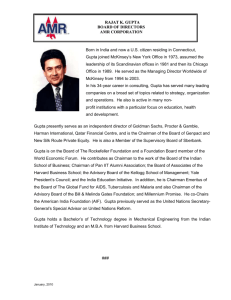
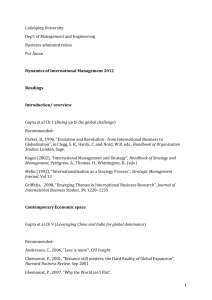
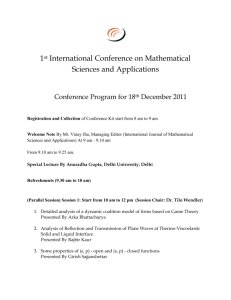
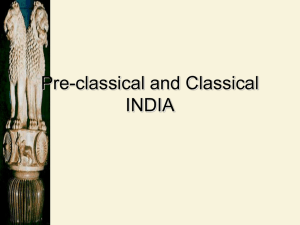
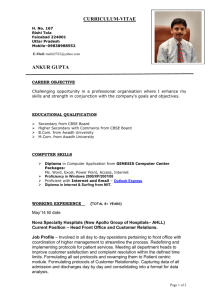
![How to prepare for the industry of the f[...]](http://s3.studylib.net/store/data/006625801_1-28d993b77928eebf9db4213fbb4f2207-300x300.png)
